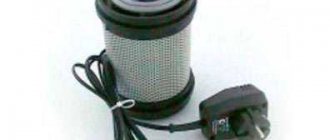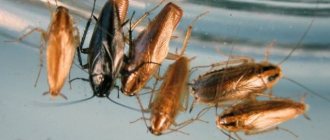Somehow it’s hard to call a mole a garden pest. But a cute animal with smooth fur can bring a lot of unpleasant moments to property owners who discover a number of fresh molehills on the lawn or beds. On the other hand, the mole actively destroys the larvae of May beetles, mole crickets and other insects.
This is interesting! What do moles eat in the garden and what do they bring more to gardeners - benefit or harm?
General operating principle of repellers
Such devices drive away moles with ultrasound, electromagnetic pulses or vibration vibrations. The range is approximately 45 meters.
The repelling range is affected by various obstacles in the path of the generated waves:
- trenches;
- earth embankments;
- wells;
- large boulders;
- stone elements of landscape design;
- the buildings.
The fewer obstacles, the more efficiently the device works. Several devices are installed in different parts of the cultivated area. The operating principle depends on the type and design.
On a note! The mole repeller is a harmless device for humans. It does not harm plants or insects. This is an environmentally friendly means of combating earth-moving animals.
How to get rid of a mole in a greenhouse
Loose soil with many worms and warm air attract moles to greenhouses. Having multiplied in greenhouse conditions, rodents cause irreparable damage to plantings.
Rodents feel comfortable in a greenhouse; getting rid of them is not easy. Therefore, experienced gardeners practice a proven method of fighting moles. To prevent pests from getting inside, a deep trench, up to half a meter, is dug along the perimeter of the greenhouse. The bottom is covered with crushed stone and sand and compacted. A geogrid is laid on the bottom so that the edge is on the wall. Crushed stone and sand are again poured on top, and a non-woven fabric is laid. Cover with soil and level.
Pesticides used:
- "Zookoumarin";
- "Efa";
- "Ratobor";
- "Chopping";
- "Storm";
- “Graincide.
Such toxic agents should not be used if there are pets living in the house or area.
Advice! Lures are laid out using rubber gloves. Animals have an excellent sense of smell; they can smell a person.
Getting rid of moles in greenhouses using traditional methods:
- put lumps of moss inside, smeared with Vishnevsky ointment, tar or turpentine;
- daffodils are planted;
- lubricate the walls with a solution of creolin (10 g per 10 liters of water).
An artificially created barrier prevents moles from entering the greenhouses: a deep trench is dug along the perimeter, and solid materials are placed vertically into it: slate, corrugated sheets, fine-mesh mesh. Such a blockade will not be superfluous when planning construction work: a house, a fence, a cellar.
When the first signs of moles living in the greenhouse appear, you should immediately take action before the rodents completely leave you without a harvest.
Types of repellers
Many devices operate in several modes. Provide the user with the ability to manually or automatically select the frequency of sound or vibration waves. The efficiency of the device depends on the power and other technical parameters.
8 best DIY mole repellers
Types of repellers:
- Mechanical.
- Electrical.
- Ultrasonic.
The approximate period for expelling moles after installing the device is one and a half months. There is a possibility that after the device is turned off, the digging animals will return to the site. In this case, traditional poison traps are used.
Repelling moles is a relatively ineffective way to expel them from a cultivated area. Animals often adapt to infrasonic or other generated radiation. If there is a busy highway near the site, animals get used to constant noise and vibrations. They stop responding to the effects of waves.
Mechanical repellers
The basis of the design of such devices is a disk eccentric. The mechanism produces special oscillatory pulses. Resonance of the desired frequency occurs due to the displacement of the disk relative to the central axis of the shaft. Some models are equipped with an electromechanical vibration element. They create a double burden on digging animals.
Electrical devices
Such devices generate electromagnetic pulses, to which moles are sensitive. Devices of this type are powered by a solar panel or built-in battery. Modern repellers have a nice design. Fighting moles with electricity gives good results.
Ultrasonic devices
Such devices operate thanks to a special built-in emitter. The wave propagation range depends on several factors and reaches 50 meters. The devices do not interfere with pets, but become an insurmountable barrier for digging animals.
Fighting moles in the garden with folk remedies
Methods of fighting moles using folk methods have been known since tsarist times. Traps were placed on them and caught mechanically. Strong-smelling substances, foods and liquids were used to get rid of rodents.
In the habitats of moles, the freshest holes are torn up to the level of the horizontal passages of the animals. Pour in a mixture of fuel oil and kerosene in a ratio of 2:1, cover with earth and compact tightly.
The following are lowered into the repellent holes:
- pieces of rotten fish or meat;
- naphthalene;
- bleach;
- rotten eggs;
- turpentine;
- cigarette butts;
- onion and garlic peels;
- Castor oil;
- tobacco or shag;
- rags soaked in diesel fuel, gasoline, and machine oil.
Animals have a keenly developed sense of smell, the smell scares them away, they leave their favorite place, but not for long.
There are other, “old-fashioned ways of fighting rodents:
- Reeds or any tubes with an empty cavity inside are inserted into mole holes to a depth of 1-1.5 meters. The ends of 50-70 cm should remain outside. In windy weather this creates a howling effect. Moles cannot tolerate sharp sounds and leave.
- A champagne bottle is buried at an angle, with the neck facing outward, in mole habitats. The wind, getting inside, creates loud howling sounds that rodents cannot stand.
- “Spinners” and rattles, similar in structure to a weather vane, are made from plastic bottles and cans. The wind spins the blades, creating a sound effect.
Plant the problem area with plants with a pungent odor:
- daffodils;
- woodlands;
- milk caper;
- marigolds;
- castor bean.
Advice! Special mole traps, traps, and devices for catching rodents are used. The method is suitable for summer residents who have free time - traps are checked every 4-5 hours.
Fighting moles with tar is effective if the method is used regularly. Wooden stakes are generously coated with birch tar and driven into the ground, every 2-3 meters throughout the entire territory. They are periodically rearranged and processed again.
Moles are expelled from areas using gas. A canister of tear gas is sprayed directly into the holes. It is important to take precautions: rubber gloves, respirators, goggles. Car enthusiasts often use exhaust gas as a means of control. Plastic pipes are connected to the exhaust pipe and buried deep in the ground. The car should be left running for at least 30-40 minutes with the engine running.
Fighting moles using electricity is a complex method, and you need to have power sources on hand: a battery or an electrical network. Iron rods are stuck into the ground to a depth of 1-1.5 meters. A metal wire is pulled between them and the current is connected.
Owners of personal plots recommend using tablets to control rodents. Modern industry offers a wide range of:
- "Anti-Crote";
- "Nutcracker";
- "Throw";
- "Alphos-mole";
- "Dakfosal Antikrot".
Alphos the mole
The tablets are placed directly into the wells. The animals eat them and die within 3-4 days.
Moles have excellent hearing, and loud noises frighten them. Fighting moles with an alarm clock is an effective way to drive pests away from your site. To do this, they are placed in jars, the time is set and the lids are rolled up. Traps are buried to a depth of at least 50 cm in the area where the moles have settled. Loud sound and vibration will scare away animals.
Reference! In dry weather, moles are inactive; their main food, earthworms, is not in the soil. After the rain, “work” resumes.
Radical and highly effective methods include chemistry. To combat moles, fumigants and insecticides are used:
- "Carbigant";
- "Fostaxin";
- "Mole Thrower";
- "Tornado";
- "Argus".
Zinc phosphite is widely used. A teaspoon of the drug is lowered to the bottom of the tunnel, after expanding the hole with a probe. The hole is closed and the soil is compacted. 3-4 baits per 1 square meter are enough.
Fighting moles with firecrackers is practiced. They are lit, lowered into mole holes and covered with a bucket. The blast wave will frighten or stun rodents. To enhance the effect of the firecracker, ammonia is added.
The holes in the area are filled with water. The hose is placed deep into the hole and poured in for a long time until all the labyrinths dug by rodents are filled. Urine is poured into molehills and feces are placed.
They exterminate moles mechanically by digging out their labyrinths. The animal cannot stand drafts and crawls out of their shelters to restore the passages of the gallery. Or they bury a large container deep into the ground: a pan or bucket. Visually impaired moles fall into improvised traps and cannot escape.
Rating and review of effective models
Most devices are made of high quality materials. They have reliable electronic filling and components, and are easy to use and control. They effectively repel moles, small rodents, and other agricultural pests. Below is a rating of popular models.
Help 80410
Ultrasonic repeller operating in a wide frequency range. This makes it impossible for moles to get used to the generated waves. The area of irritating pests is 800 m2, which is sufficient to protect a large area. Powered by four R20 size batteries. The device is compact - only 7x28 cm. Using the Help 80410 mole repeller, you can quickly expel earth-moving animals without killing them. Gives a temporary effect.
"Masterkit Antikrot"
This is a simple, effective and easy to install means of combating earth-moving animals. Does not harm worms and soil microflora. Electronic antikrot is a repeller of underground rodents that generates vibration radiation. The approximate coverage area is 4–10 acres, depending on the density of the soil. On a large area, 2-3 devices are installed. They are placed in the ground along the perimeter of the cultivated area at intervals of 10–15 meters. The model has flexible settings. For the winter, the devices are taken out of the ground.
Rexant R30
Ultrasonic mole repeller. The effective radiation frequency is in the range of 400-1000 Hz. Combines mechanical vibration with ultrasonic waves. Works well on moles and shrews. Powered by NiMH 1.2V solar panel. Dimensions of the device – 60x60 mm. The electrical capacity of 600 mAh ensures sufficient autonomy. This simple tweeter with a mechanical vibration function will protect your garden area from the invasion of digging animals.
"Anti-Crote Dadget"
The device sends soft crackles and clicks into the surrounding space at intervals of 25 seconds. In the soil they spread far, irritating moles. The device is designed to protect a plot of 5 acres. Protects root crops from the subversive activities of moles and keeps the harvest intact.
Sititek "Grom-Plus"
The range of the device is 20 meters. Produces ultrasound, which repels earth-moving animals. Generates wave vibrations with a frequency of 400 Hz with a frequency of 35 seconds. Electronic components are powered by four batteries. Thanks to its cone-shaped shape, it easily penetrates into the soil. Device height – 35 cm, diameter – 44 mm.
To quickly expel moles from the site, several repellers are installed along the perimeter of the protected area at intervals of 20–30 meters.
"Grad A-500"
This innovative device uses a unique algorithm for alternating ultrasonic pulses. It prevents the animals from getting used to the generated radiation. Designed to protect large areas – up to 500 m2. Power is supplied from a 220 volt network. Capable of operating independently from batteries. The device has a durable body that is not subject to corrosion and the influence of weather and climatic factors.
Important information! "Grad A-500" generates ultrasound and noise that can be heard by the human ear. It cannot be turned off or made quieter. Designed for installation away from human habitation.
"Ecosniper LS-997MR"
The repeller of this model implements a circuit for emitting vibration oscillations of variable frequency. At the same time, the interval and duration of the pulses are varied. This prevents animals from adapting to ultrasound exposure. The device produces a noise pressure of 140 dB at a distance of one meter. Protects an area of up to 1500 m2. Made in a metal case 41.5 cm long. Ultrasonic radiation range 300-400 Mg.
The device is contraindicated at negative temperatures. For the winter it needs to be removed from the ground.
Sititek "Grom-Profi M"
The device influences the sensory mechanism of earth-moving animals with low-frequency sound signals combined with vibration pulses. The device is designed to protect an area of up to 1500 m2. The aluminum body guarantees the operational reliability and durability of the repeller. Four alkaline batteries provide four to six months of operation.
"Tornado OZV.03"
The device belongs to the submersible class of repellers. Made in a durable and wear-resistant case with a length of 38.5 cm. Powered by four AAA batteries or an integrated solar panel. Protects a cultivated area of up to 100 m2. It has the function of automatically selecting the duration and intervals of ultrasonic pulses. Operates up to three seasons in a temperature range of 0…-50°C.
Weitech WK-0675
The ultrasonic repeller is made of durable ABS plastic. The radius of wave propagation is 100 meters. Maximum sound pressure – 125 dB. Frequency 300-400 Hz. Such impulses irritate moles and force them to leave their homes. Acoustic technology for expelling earth-moving animals has proven its effectiveness in practical use by summer residents and gardeners.
"Yastreb-500"
The device has good autonomy and quickly expels moles from the cultivated area. It is capable of functioning without human intervention for three months. Ultrasonic coverage area – 500 m2. It has compact dimensions and a reliable design. The device is buried in the soil or mounted under the ceiling of the room using a special bracket.
Mole repeller WK-0677
The effective area of influence of ultrasonic pulses generated by the device is 350 m2. A random change in wave frequency prevents moles from adapting and forces them to leave their inhabited territory. The pulse frequency is 30 seconds. The range depends on the density of the soil and the number of solid obstacles. Powered by built-in battery and solar panel.
Skat-49
The repeller affects earth-moving animals with infrasonic waves, forcing them to look for another habitat. An additional load is created by mechanical vibrations that travel well through the soil. The electronic circuit constantly changes the pulse frequency, preventing the moles from adapting to the impact.
How to choose the right repeller
Before purchasing a device for this purpose, several key criteria are taken into account:
- power supply;
- type of site and physical and mechanical characteristics of the soil;
- the number of solid barriers that block, distort and deflect waves;
- device design.
Solar-powered mole repellers provide good autonomy. They are able to function for a long time without human intervention. For rocky and dense soil, it is better to choose devices that propagate mechanical waves.
Additional Tips
Combined action devices – combining several types of load on moles and functional modes – give a good effect. Random devices distribute waves in a random order, which does not allow digging animals to get used to the impact. Before installing the repeller, you must carefully read the installation and operating instructions. Implementation in dry soil reduces the effectiveness of exposure compared to work in wet soil.
Many models of mole repellers have a complex effect and are able to provide comprehensive protection of the area from earth-moving animals. Correct operation of such a device is a guarantee of reliable and efficient operation. Many repellers cannot be repaired. Therefore, they must be handled with care.
Mole traps
Let’s not beat around the bush - according to reviews from gardeners, the most effective means of fighting moles, despite the apparent simplicity of the device, are mole traps.
But not all traps are equally effective. For example, one of the most common devices (often for reasons of humanity, because an animal caught in such a trap does not die) is a pipe trap, which is installed in the passages dug by moles. The mole runs into such a trap, but cannot get out. However, in practice, everything is not so rosy - after all, the mole pushes a lump of earth in front of itself. This lump falls into the trap, the door slams and the mole does not go further. The effectiveness of this device is an order of magnitude lower than even conventional wire mole traps, not to mention the more modern designs of traps.
a review of the best mole traps based on reviews from gardeners and gardeners here -
The photo shows a Mole Trap mole trap from the Swiss company Swissino
Feedback on traps:
“Last year, our site was chosen by moles. We arrived in the spring and gasped - the lawn and beds were ruined, heaps of earth had been dug up all around. The mole walked through the strawberries and undermined several of the strongest bushes. On the advice of a neighbor, we purchased and installed simple SuperCat wire mole traps in different parts of the site. In the first 2 weeks, 14 moles were caught. In the subsequent ones - 1-2 per week. At first we checked the traps every 2-3 days, now once a week. The result is obvious - no more holes and hills on the lawns. - " Irina Ivanovna, Vladimir.
Why don’t buyers always opt for traps (despite their undeniable effect), but prefer repellers?
This happens for two reasons:
- firstly, mole traps must be constantly checked (once every 3-5 days) and, if necessary, freed from animal corpses. It is advisable to move them around the site and install them in new molehills, and this is your time.
- secondly, this is a question of humanity. Not everyone is happy with this method of dealing with small animals.
Mole repellers
Conventionally, repellers can be divided into two types - mechanical and ultrasonic. As for the first type of device, you’ve probably seen strange structures more than once in vegetable gardens and suburban areas - plastic bottles installed with their necks down in the passages of the labyrinth (making “squealing” sounds) or an iron pin with a tin can placed on it, which constantly jingles in the wind . The effect of such “repellents” tends to zero (since rodents simply get used to constant noise and do not pay attention to it), so we will not focus on these devices.
Sound vibration (ultrasonic) repellers
Devices in the form of a cylinder with one pointed end, which is installed in the ground. The principle of operation of such a device is that the repeller emits mechanical and ultrasonic vibrations, which frighten and cause a feeling of panic in animals. The devices are powered by regular batteries and do not require attention for 3-6 months.
Range of action - from 500 to 1000 m2. The operation of the device is invisible to humans and pets, since the vibrations propagate exclusively underground.
But there are also disadvantages - repellers are not always effective and this largely depends on the properties of the soil (in dry soil the effect of repellers is much lower than in wet soil).
a review of the best ultrasonic repellers based on reviews from gardeners here -
The photo shows a set of RemiLing repellers 6 acres
All repellers are humane ways to get rid of moles. If you are able to choose the most optimal option for arranging devices, the animals will leave your area.











